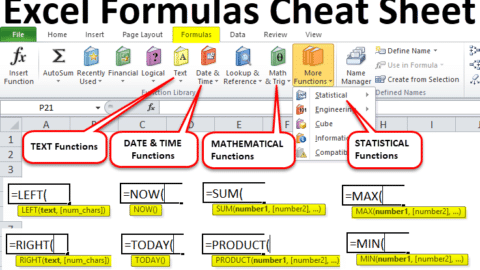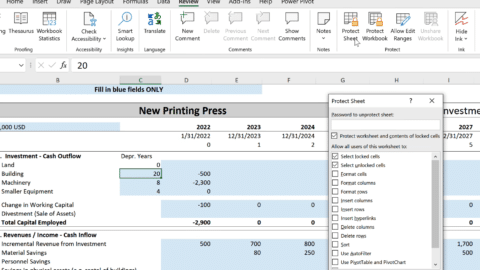How to Find Array Size in VBA? Changing Array Size and Maximum Limits
Learn how to find array size in VBA, modify array dimensions, and understand the maximum array size in VBA. Get expert insights and step-by-step guidance on working with arrays in VBA.
Table of Contents
Introduction
Arrays are fundamental data structures used in programming to store a collection of values. In VBA (Visual Basic for Applications), arrays play a crucial role in managing and manipulating data efficiently. This article dives into the details of how to find the size of an array in VBA, how to change array dimensions, and what the maximum array size limitations are. Whether you’re a beginner or an experienced programmer, understanding these concepts will enhance your VBA coding skills and empower you to work with arrays more effectively.
How to Find Array Size in VBA?
Finding the size of an array in VBA is essential to ensure you’re working with the correct number of elements. To determine the array size, you can use the UBound function. Here’s how:
- Open the VBA Editor: Access the VBA editor by pressing
Alt + F11within the Microsoft Office application you’re working with. - Navigate to Your Code: Find and open the module where your array is defined.
- Use the UBound Function: To find the size of a one-dimensional array, use the
UBoundfunction followed by the array name. For example:vbaDim myArray(10) As Integer
Dim arraySize As Integer
arraySize = UBound(myArray)
- Display the Size: You can display the array size using a message box or by printing it in the Immediate Window.
By following these steps, you can easily determine the size of an array in VBA and use this information to navigate through its elements accurately.
How Do I Change the Size of an Array in VBA?
Changing the size of an array in VBA involves creating a new array with the desired dimensions and transferring elements from the old array to the new one. Here’s a step-by-step guide:
- Create a New Array: Declare a new array with the desired size using the
ReDimstatement.vbaDim newArray(20) As Integer
- Copy Elements: Loop through the old array and copy its elements to the new array. This may require using a loop structure like
FororFor Each. - Dispose of the Old Array: Since arrays in VBA are dynamically allocated, the old array will be automatically deallocated after transferring elements to the new array.
- Assign the New Array: Assign the new array to the old array variable to start using the updated array with the new size.
What Is the Maximum Array Size in VBA?
VBA imposes certain limitations on array sizes due to memory constraints and the 32-bit nature of the language. The maximum array size depends on the available memory in your system and the version of Office you’re using. However, the theoretical maximum number of elements you can have in a single dimension of an array is approximately 2 billion.
It’s important to note that reaching this theoretical limit is rare and often impractical due to memory limitations. As arrays consume memory, excessively large arrays can lead to performance issues and slow down your application.
Basics:
- An array is declared using the Dim statement, followed by the array’s name and its dimensions.
- Arrays can be one-dimensional, two-dimensional, or multi-dimensional.
- The first index of an array is typically 0, unless explicitly specified.
Dimensions:
-
One-Dimensional Array:
vbaDim arr(5) As Integer
' Creates an array with 6 elements: arr(0) to arr(5)
-
Two-Dimensional Array:
vbaDim matrix(3, 2) As Double
' Creates a 4x3 matrix: matrix(0,0) to matrix(3,2)
-
Multi-Dimensional Array:
vbaDim cube(2, 2, 2) As String
' Creates a 3x3x3 cube: cube(0,0,0) to cube(2,2,2)
Size:
- Use the UBound function to determine the upper bound of an array. For a one-dimensional array:
vba
Dim upperBound As Long
upperBound = UBound(arr)
- For multi-dimensional arrays, you can specify the dimension:
vba
Dim upperBound1 As Long, upperBound2 As Long
upperBound1 = UBound(matrix, 1)' Upper bound of the first dimension
upperBound2 = UBound(matrix, 2) ' Upper bound of the second dimension
Length vs. Size:
- Array Length: Refers to the number of elements in a specific dimension.
- Array Size: Represents the total number of elements in an array, regardless of dimensions.
Redimensioning Arrays:
- Use the ReDim statement to change the size of an array.
vba
ReDim arr(10) ' Changes the size of arr to 11 elements
Dynamic Arrays:
- Arrays can be dynamically resized using the ReDim Preserve statement.
vba
ReDim Preserve arr(15) ' Keeps existing data while resizing to 16 elements
Array Functions:
- LBound: Returns the lower bound of an array dimension.
- UBound: Returns the upper bound of an array dimension.
Important Notes:
- Arrays are zero-based by default, meaning the first element is arr(0), matrix(0,0), etc.
- ReDim Preserve is resource-intensive; use it judiciously to prevent performance issues.
- Arrays can store values of any data type, including objects.
Array Copying:
- Use loops to copy elements from one array to another.
- Use
Application.WorksheetFunction.Transposefor efficient 2D array transposition.
Array Best Practices:
- Choose the right data type and size to conserve memory.
- Use constants for array dimensions for better code maintenance.
- Be cautious with large arrays to avoid memory issues.
- Use dynamic arrays when the size is unknown or likely to change.
FAQ’s
Q: Can I have multidimensional arrays in VBA?
A: Yes, VBA supports multidimensional arrays, which allow you to organize data in rows and columns, similar to a table.
Q: What happens if I try to access an element beyond the array size?
A: Accessing an element beyond the array size can result in a “Subscript out of range” error. Always ensure that your index is within the bounds of the array.
Q: Is there a way to change the size of an array without copying elements?
A: No, in VBA, you need to copy elements to a new array when changing its size. This ensures that the new array is properly allocated in memory.
Q: Can I resize an array to a smaller size?
A: Yes, you can use the ReDim statement to resize an array to a smaller size. However, this will result in the loss of data beyond the new size.
Q: Are there alternatives to using arrays in VBA?
A: Yes, you can also use collections or dictionaries to store and manipulate data. These structures offer different features and flexibility compared to arrays.
Q: How can I optimize memory usage when working with large arrays?
A: To optimize memory usage, consider using dynamic arrays and releasing memory when it’s no longer needed. Additionally, use data types that match the size of the values you’re storing.
Conclusion
In the world of VBA programming, arrays are invaluable tools for managing data efficiently. Understanding how to find the array size, change array dimensions, and being aware of the maximum array size in VBA is essential for writing optimized and effective code. By following the steps outlined in this article, you’ll be better equipped to work with arrays, enhance your coding skills, and create more robust applications.
Hello, I’m Cansu, a professional dedicated to creating Excel tutorials, specifically catering to the needs of B2B professionals. With a passion for data analysis and a deep understanding of Microsoft Excel, I have built a reputation for providing comprehensive and user-friendly tutorials that empower businesses to harness the full potential of this powerful software.
I have always been fascinated by the intricate world of numbers and the ability of Excel to transform raw data into meaningful insights. Throughout my career, I have honed my data manipulation, visualization, and automation skills, enabling me to streamline complex processes and drive efficiency in various industries.
As a B2B specialist, I recognize the unique challenges that professionals face when managing and analyzing large volumes of data. With this understanding, I create tutorials tailored to businesses’ specific needs, offering practical solutions to enhance productivity, improve decision-making, and optimize workflows.
My tutorials cover various topics, including advanced formulas and functions, data modeling, pivot tables, macros, and data visualization techniques. I strive to explain complex concepts in a clear and accessible manner, ensuring that even those with limited Excel experience can grasp the concepts and apply them effectively in their work.
In addition to my tutorial work, I actively engage with the Excel community through workshops, webinars, and online forums. I believe in the power of knowledge sharing and collaborative learning, and I am committed to helping professionals unlock their full potential by mastering Excel.
With a strong track record of success and a growing community of satisfied learners, I continue to expand my repertoire of Excel tutorials, keeping up with the latest advancements and features in the software. I aim to empower businesses with the skills and tools they need to thrive in today’s data-driven world.
Suppose you are a B2B professional looking to enhance your Excel skills or a business seeking to improve data management practices. In that case, I invite you to join me on this journey of exploration and mastery. Let’s unlock the true potential of Excel together!
https://www.linkedin.com/in/cansuaydinim/










